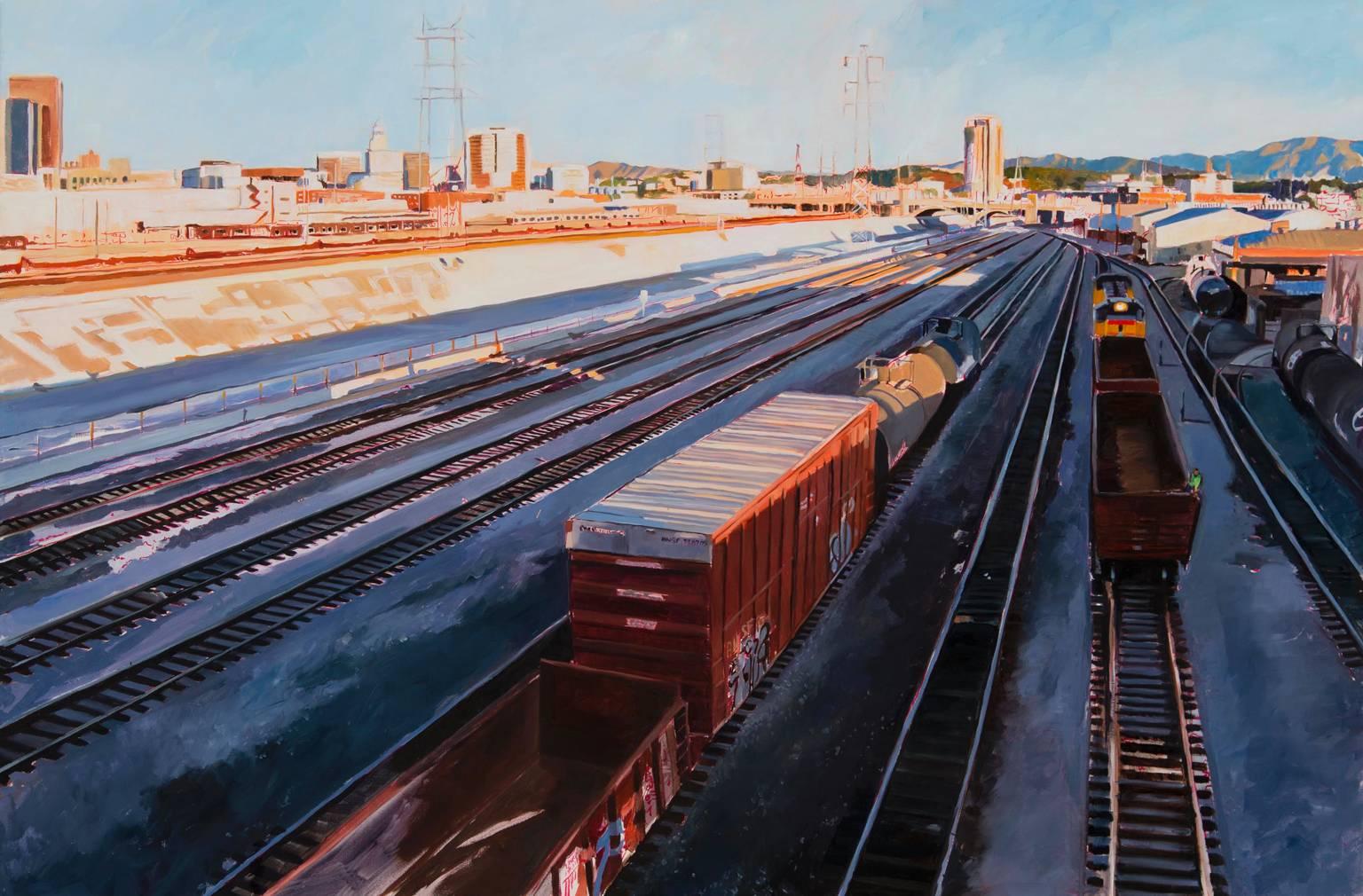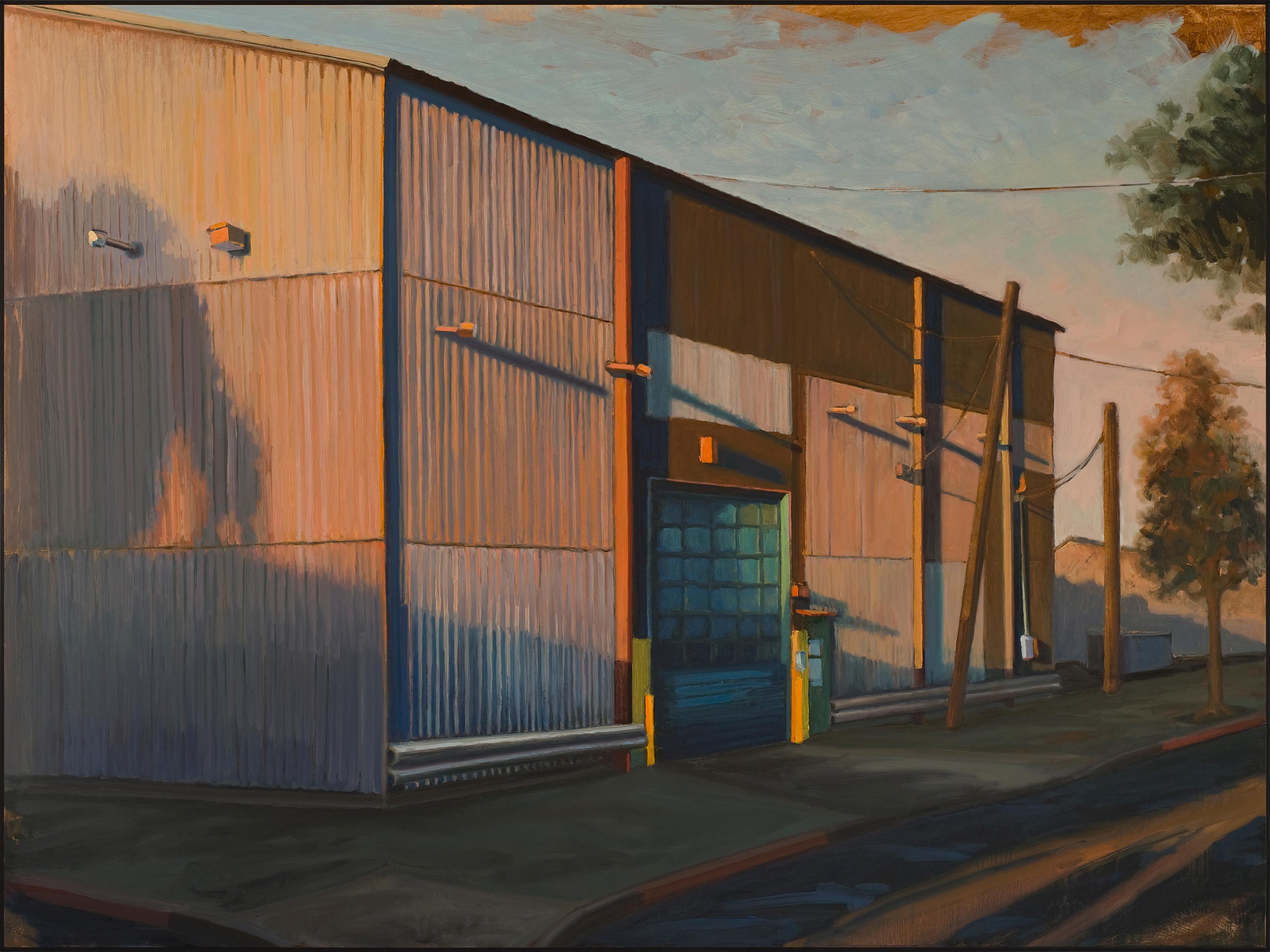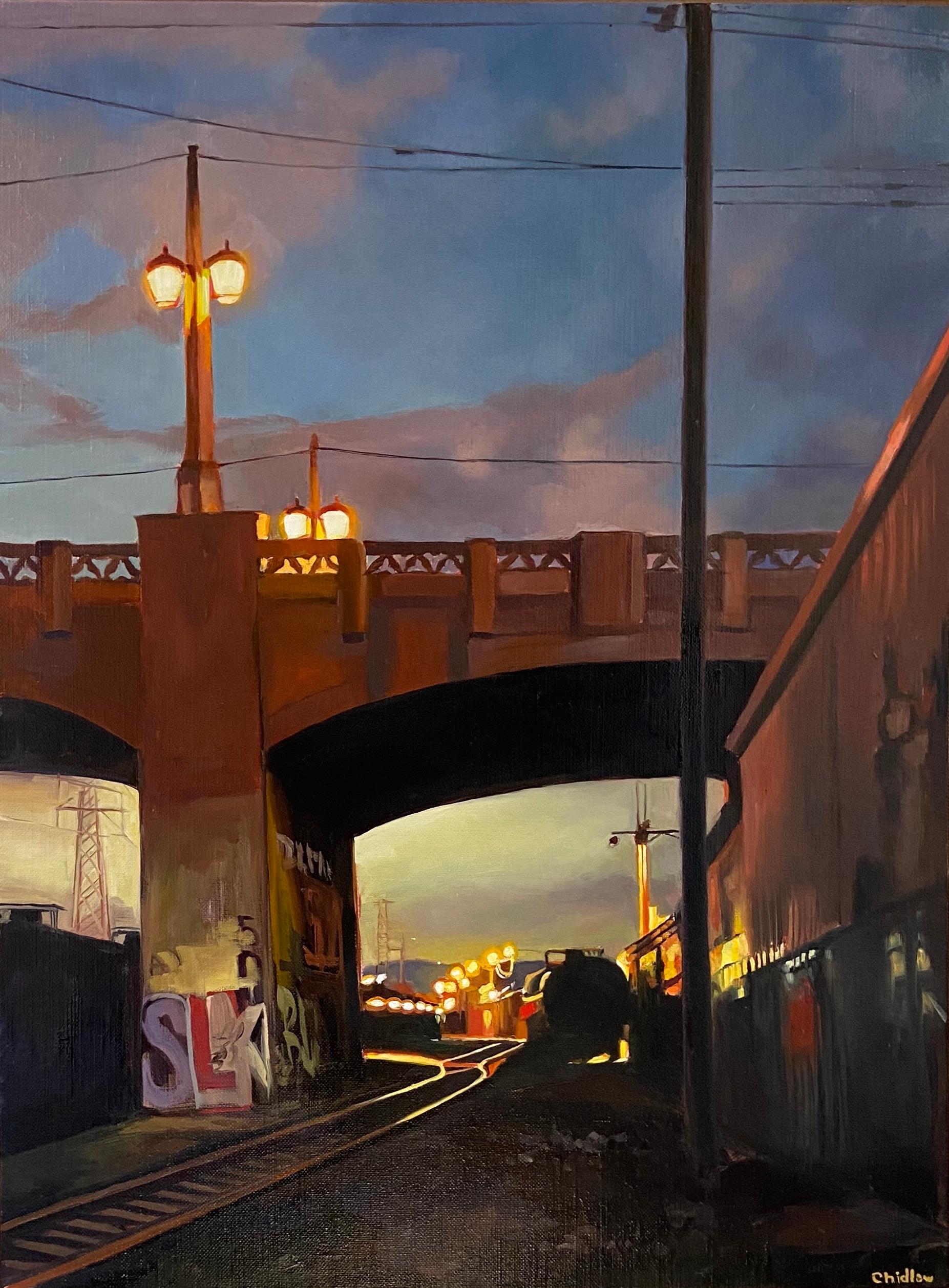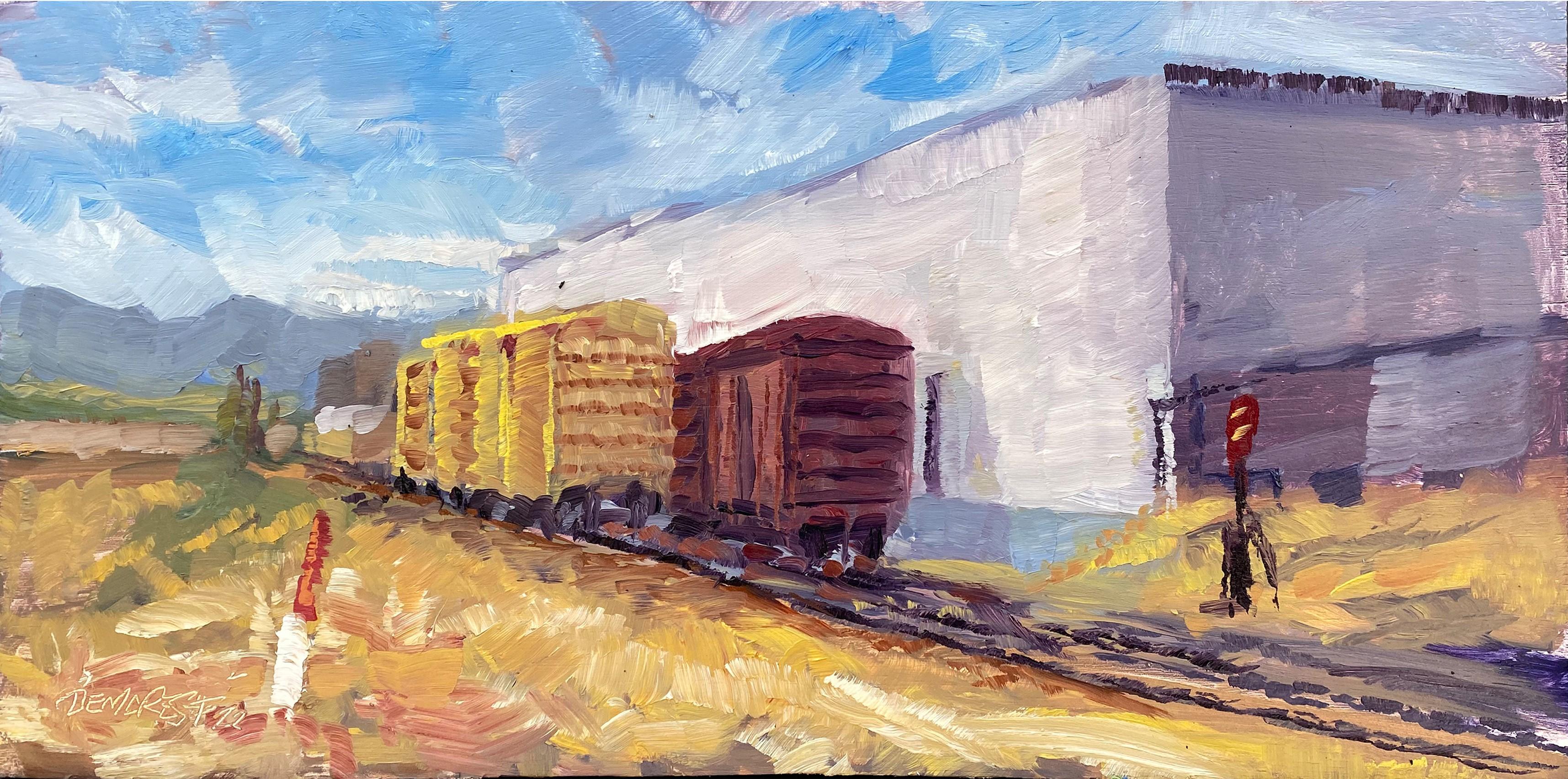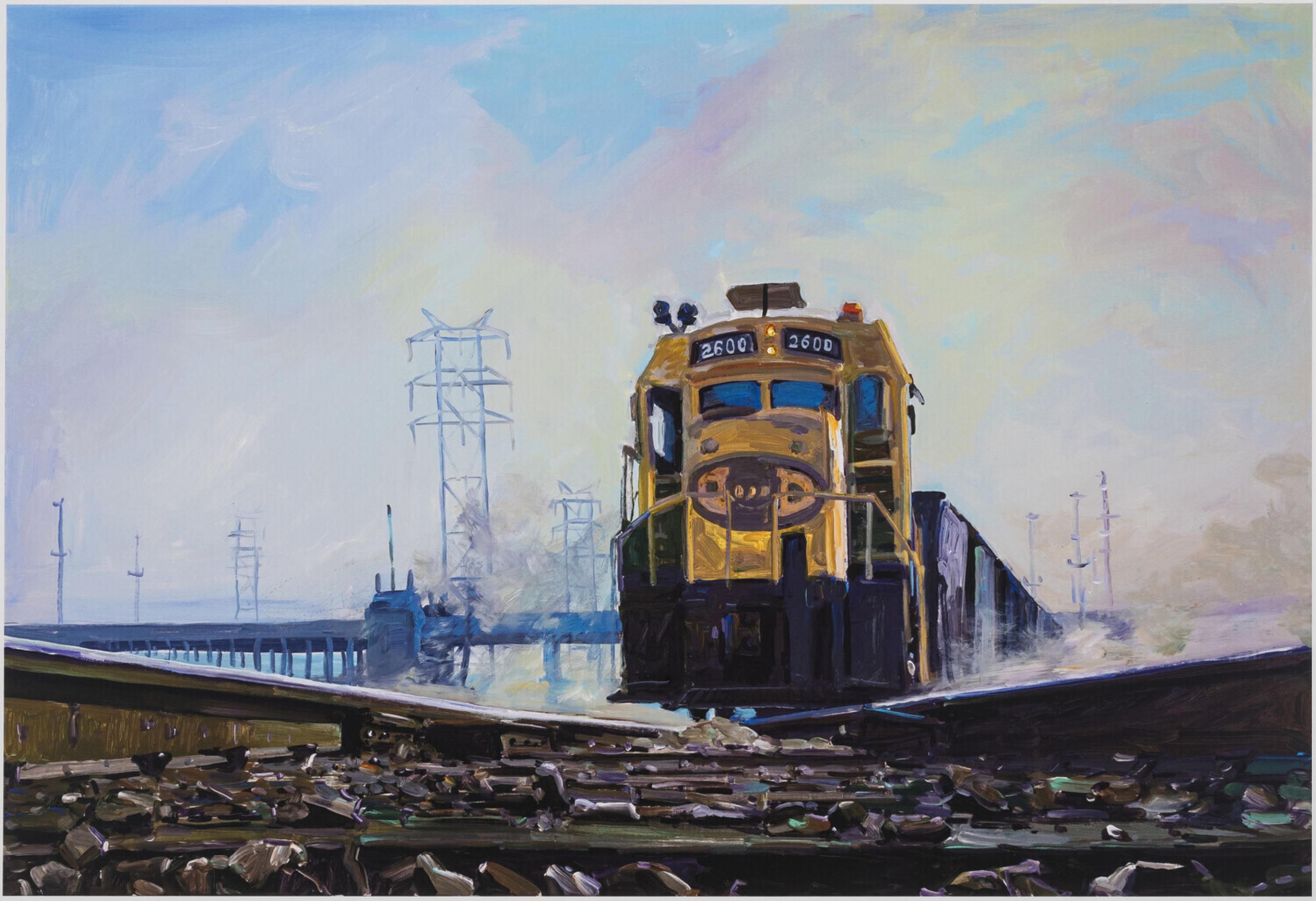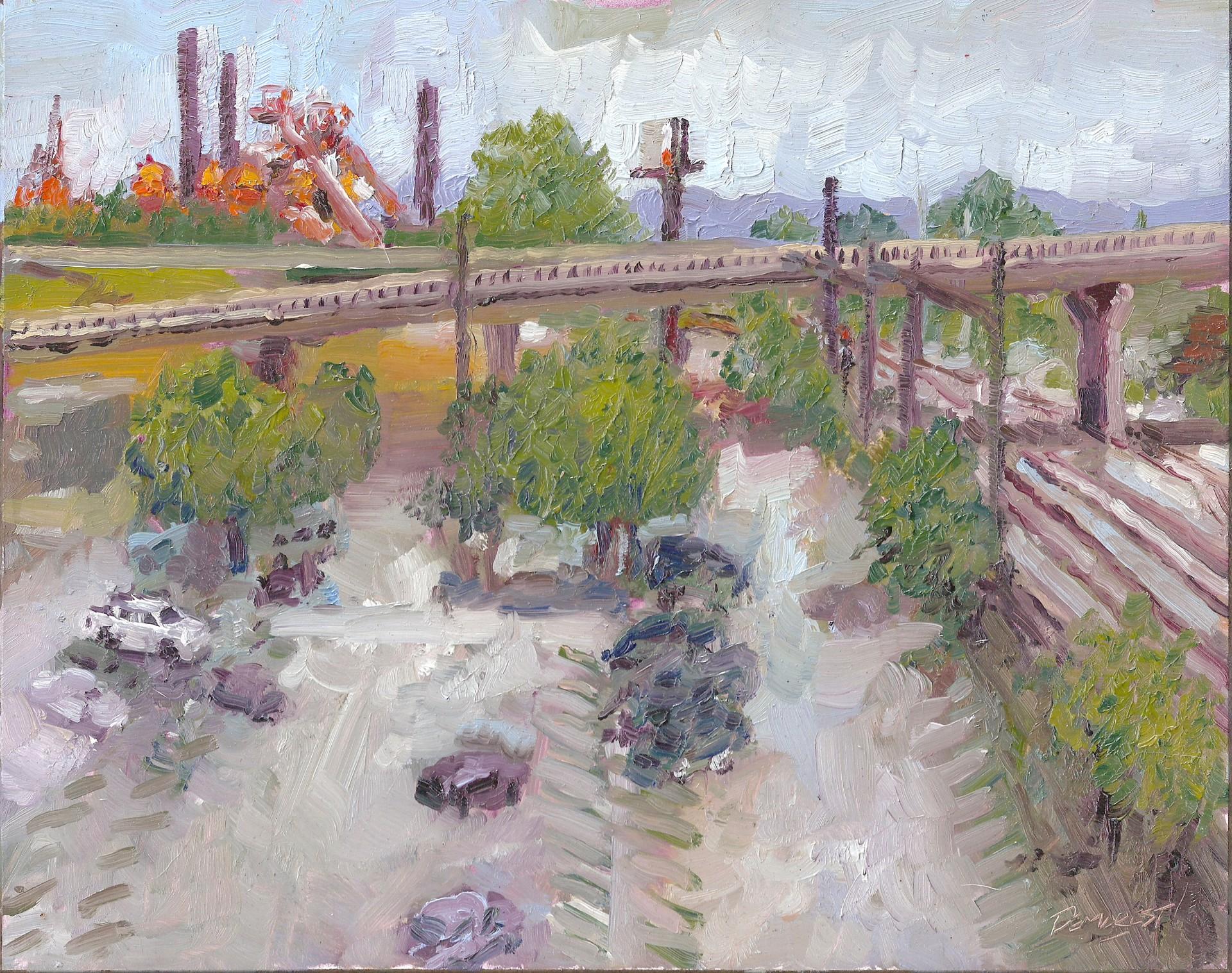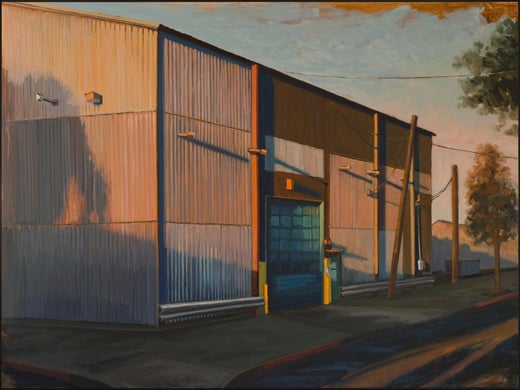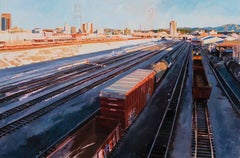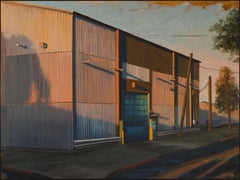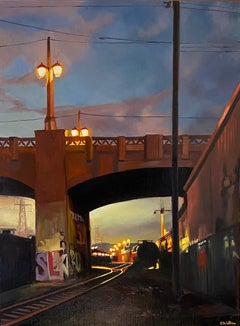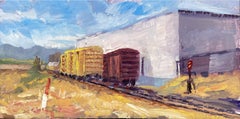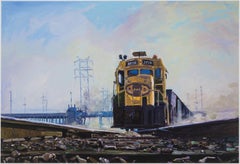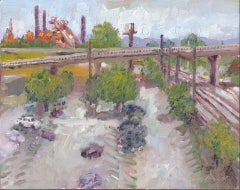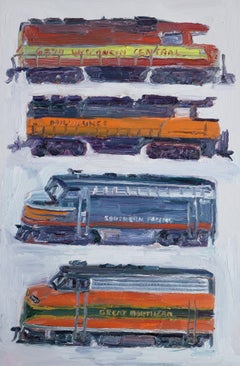Items Similar to Trainyard No. 12
Want more images or videos?
Request additional images or videos from the seller
1 of 7
Sharon FederTrainyard No. 12
$5,000
£3,742.43
€4,324.42
CA$6,933.33
A$7,766.22
CHF 4,037.57
MX$95,897.24
NOK 51,435.50
SEK 48,624.27
DKK 32,271.17
Shipping
Retrieving quote...The 1stDibs Promise:
Authenticity Guarantee,
Money-Back Guarantee,
24-Hour Cancellation
About the Item
Represented by George Billis Gallery, NYC & LA -- Humanity is archival, like the strata that compose the earth. Our structures and art, superfund sites to cathedrals, exist because of us. The things we create form layers upon the earth, reflecting humankind, interwoven with the natural world that birthed us. We make the marks we make, like creases in one’s face, witnessing and demonstrating the story of each life.
"We won’t be here forever. We can’t be. It is not tragic. Our choice is whether to exist in fear, or to see our existence as a celebration of our existence. Life is archival.
"My paintings contemplate the geometry and emptiness of structures, visually and metaphorically. Like silent sentries, structures observe, record and imply change in time. Buildings, as elements in the gigantic still life constructions that form our urban environment inform both an understanding and unity with the made and natural world."
Colors: Yellowe, Orange, Red, Blue
Notes: Trains, Locomotive, Industrial, Urban
- Creator:Sharon Feder (American)
- Dimensions:Height: 36 in (91.44 cm)Width: 36 in (91.44 cm)
- Medium:
- Movement & Style:
- Period:
- Condition:
- Gallery Location:Fairfield, CT
- Reference Number:1stDibs: LU18321194463
Sharon Feder
Feder’s paintings depict the almost forgotten corners of our fast-changing urban areas, focusing on alleyways and industrial buildings off the beaten path. The paintings are vibrant with textured surfaces created through skilled manipulation of the paint - they are technically full of value and tradition. Within each composition lies a tension between realism and abstraction; representation and the geometric. Feder draws inspiration from neighborhoods in Los Angeles and Denver areas. However, the location almost becomes irrelevant as she teases out the universal in the byways of the industrial edges of our sprawling cities. These paintings could be anywhere. Her paintings are uncluttered by urban debris - the buildings are perhaps abandoned but not rundown. The linearity of these forms becomes the structure for her study of color, light, shadow, and reflection. These buildings and power lines have become the man-made landscape taking the place of hills and trees. In essence, Feder is a modern landscape painter - her landscape is the mountain range of urban industrial sprawl. Feder writes, “focusing on urban imagery and on the universality of human vision, these paintings speak to the angst of our post-industrial world; as the forms we construct and the terrain we inhabit mirror our notions of self, these images are thereby explorations of our solitude, our history, and our interconnection. In subject matter and through rhythmic compositions of form and color, the paintings document and celebrate the choreography of our existence.” Sharon Feder completed BFA coursework at the University of Washington, Seattle and received her BA in Fine Art from Regis University, Denver. Feder has exhibited extensively in the metropolitan Denver area and has shown with George Billis Gallery Los Angeles and New York. In 2014 Feder exhibited a large body of work at the Boulder Museum of Contemporary Art. She has painted over 60 murals and painting installations in commercial and residential venues, both interior and exterior in Aspen, Denver, Telluride and Palm Beach. She currently lives and works in Denver, CO.
About the Seller
5.0
Vetted Professional Seller
Every seller passes strict standards for authenticity and reliability
Established in 1996
1stDibs seller since 2015
256 sales on 1stDibs
Typical response time: <1 hour
- ShippingRetrieving quote...Shipping from: Los Angeles, CA
- Return Policy
Authenticity Guarantee
In the unlikely event there’s an issue with an item’s authenticity, contact us within 1 year for a full refund. DetailsMoney-Back Guarantee
If your item is not as described, is damaged in transit, or does not arrive, contact us within 7 days for a full refund. Details24-Hour Cancellation
You have a 24-hour grace period in which to reconsider your purchase, with no questions asked.Vetted Professional Sellers
Our world-class sellers must adhere to strict standards for service and quality, maintaining the integrity of our listings.Price-Match Guarantee
If you find that a seller listed the same item for a lower price elsewhere, we’ll match it.Trusted Global Delivery
Our best-in-class carrier network provides specialized shipping options worldwide, including custom delivery.More From This Seller
View AllFreight Train in Shadow
By Patricia Chidlaw
Located in Fairfield, CT
Represented by George Billis Gallery, NYC & LA -- Chidlaw is an American realist seeking, and finding, profundity in the realm of the commonplace. She takes aims at dignity and a dur...
Category
2010s American Realist Landscape Paintings
Materials
Canvas, Oil
Building No. 41
By Sharon Feder
Located in Fairfield, CT
Represented by George Billis Gallery, NYC & LA -- Humanity is archival, like the strata that compose the earth. Our structures and art, superfund sites to cathedrals, exist because o...
Category
2010s American Realist Landscape Paintings
Materials
Oil, Panel
Graffiti and Tank Car
By Patricia Chidlaw
Located in Fairfield, CT
"When asked what kind of paintings I make, I usually call my work "Urban Landscapes" to distinguish them as paintings about areas of human habitation rather than landscapes that refe...
Category
2010s American Realist Landscape Paintings
Materials
Canvas, Oil
Streetcar Museum, Framed
By Bennett Vadnais
Located in Fairfield, CT
Represented by George Billis Gallery, NYC & LA --Much of Bennett Vadnais’ subject matter comes from his surroundings in Manhattan and Brooklyn. With a strong background in plein ...
Category
21st Century and Contemporary Realist Landscape Paintings
Materials
Aluminum
Elevated Train Track Evening
By Derek Buckner
Located in Fairfield, CT
Derek Buckner is represented by George Billis Gallery NYC and LA. Born in 1970, Derek Buckner lives in Brooklyn, NY, with his wife, novelist Joanna Hershon, their twin sons and daug...
Category
21st Century and Contemporary American Realist Landscape Paintings
Materials
Linen, Oil
View from Vista Dome
By Patricia Chidlaw
Located in Fairfield, CT
Represented by George Billis Gallery, NYC & LA -- "When asked what kind of paintings I make, I usually call my work "Urban Landscapes" to distinguish them as paintings about areas o...
Category
2010s American Realist Landscape Paintings
Materials
Linen, Oil
You May Also Like
"Trackside 2" (2023) by Delton Demarest, Original Oil Painting
Located in Denver, CO
Delton Demarest's "Trackside 2" (2022) is an original oil painting depicting a train passing by.
Delton Demarest has been working in the freelance industry for many years. Recent an...
Category
21st Century and Contemporary Impressionist Figurative Paintings
Materials
Oil, Board
Industrial Train - Bob Dylan
By Bob Dylan
Located in London, GB
Giclée print in colours
58 × 76 cm - Paper size
62 x 80 cm - Framed size
Edition of 295
hand-signed and numbered by the artist.
comes with COA from the publishers.
framed by the pub...
Category
2010s Contemporary Landscape Prints
Materials
Giclée
Trackside on 24th overlooking Sloss and #280
Located in Denver, CO
Trackside on 24th overlooking Sloss and #280, 2020
Category
21st Century and Contemporary Figurative Paintings
Train engines, Painting, Oil on Canvas
By John Kilduff
Located in Yardley, PA
Oil painting of train engines. :: Painting :: Americana :: This piece comes with an official certificate of authenticity signed by the artist :: Ready to ...
Category
21st Century and Contemporary Other Art Style Paintings
Materials
Oil
The Train Station, Original Painting
Located in San Francisco, CA
Artist Comments
A railway stop stands beside the tracks, its weathered wood and faded paint showing years of wear. Bright autumn foliage surrounds it, contrasting with the mist...
Category
21st Century and Contemporary Realist Interior Paintings
Materials
Acrylic
Railroad Crossing, Painting, Oil on Other
By Richard Szkutnik
Located in Yardley, PA
original en plein air oil on panel :: Painting :: Impressionist :: This piece comes with an official certificate of authenticity signed by the artist :: Ready to Hang: No :: Signed: ...
Category
2010s Impressionist Paintings
Materials
Oil
More Ways To Browse
J H Lynch
John Lancaster
Lily Pad Oil Paintings
Mendocino Paintings
Place De Concorde Painting
Portrait Sultan
Rob Ceramics
Robert S Merrill
Santa Maria Della Salute
Steven Arnold
Vintage School Crossing Sign
W Ward Artist
1800 American Oil Paintings
After The Rain Oil Paintings Street
Amalfi Coast Painting
Big Bend Painting
Bluebonnets Landscape Paintings
Burton Oil Painting
